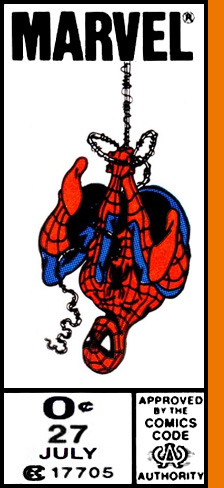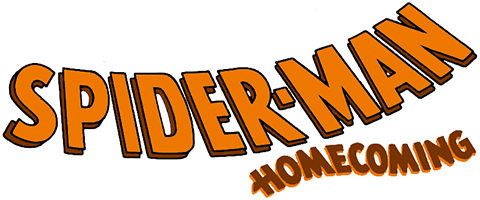

Stan Lee, Steve Ditko, [Brian Bendis, Sara Pichelli, Larry Lieber, Don Heck, Dwayne McDuffie, Jack Kirby], Jonathan Goldstein, John Francis Daley, and Jon Watts, 2017
Barely a decade and a half in, and this is already the 21st century’s third generation of Spider-Man movies. It would be nice to think that this set of filmmakers realized that the first two generations were quite bad and had found the key to finally getting a Spider-Man movie right, but this reboot has a different agenda: finding a way to squeeze Marvel’s flagship character into a cinematic universe with the Avengers at its center. In writing about previous versions of the Spider-Man franchise I have grumbled that the filmmakers have missed a core element of the character (the non-stop jokes, whether fighting baddies or meeting up with allies), have been stuck on rehashing a very limited set of stories (notably his origin), and have consquently mishandled his status quo by casting 30-year-old actors as Spider-Man while sticking him in high school, when they could just posit a 30-year-old Spider-Man. (In the comics, Spider-Man hasn’t been a high school student since 1965.) The special effects have also been unconvincing. So, here’s how this movie stacks up on those counts:
Special effects: the usual MCU chaos. Better than generation one, but if my dim memory serves me, not actually better than generation two. One off note about the MCU Spider-Man is that he seems to have Luke Cage levels of invulnerability—he gets bashed around in ways that would turn a regular person into a red splotch and just goes “Oof! Yow!”, coming away with a few bruises. The Spider-Man from the comics is a pretty tough customer, but this pushes that a bit too far, I’d say.
Jokes: Spidey’s patter is not up to the standards of the comics, but is better than that of the previous movies. The humor that isn’t reliant on quips from Spider-Man himself is actually pretty solid. We’re far from Buffy standards for action comedy, but the movie still offers up a good time.
Avoiding the origin and the Green Goblin throwing girls off bridges: thumbs up on this count. The villain this time around is the Vulture, a mid-list baddie from way back in The Amazing Spider-Man #2 in 1963; in the comics he’s a withered geriatric with silly green wings attached to his arms, but the movie gives him an imposing mechanical wing-rig that makes him seem like a reasonable threat to Spider-Man without coming near the standard that would have the Avengers immediately running to the rescue. But speaking of the Avengers—yeah, it is weird to have Spider-Man so closely tied to the Avengers in general and Iron Man in particular. I’m used to Spider-Man meeting up with everyone (from the Guardians of the Galaxy to the Transformers to the original cast of Saturday Night Live) but still being a loner inhabiting his own corner of the MU, so turning him into Tony Stark’s protégé changes the character fairly significantly. Again, the MCU draws heavily on Marvel continuity of the mid-2000s, and that is the one period when Iron Man had taken Spider-Man under his wing, even building him an “Iron Spider” suit like the Stark-designed costumes in this movie. But it’s atypical.
Ages: well, at least this Spider-Man is closer to twenty than to thirty. It’ll do. But see below.
The comics themselves have tried to reboot Spider-Man a number of times over the years. The 1990s gave us the much-reviled Clone Saga, which was meant to replace Peter Parker—now 30ish and married to a model, with a child on the way—with a clone of his called Ben Reilly, unencumbered by decades of continuity baggage. This was aborted. The 2000s gave us Ultimate Spider-Man, set in a separate universe alongside the regular MU, in which Brian Bendis told stories of a 15-year-old millennial Spider-Man in the “decompressed” style championed by Marvel’s publisher at the time, Bill Jemas. Then the 2010s arrived. Social media was now a thing, and with it came a critical mass of comics readers pointing out to the powers that be at Marvel that while in 1962, it was plausible for Stan Lee and Steve Ditko to have a kid from Queens attending an all-white public high school, in the 21st century that was just divorced from reality. So the millennial version of Peter Parker was killed off—a move much easier to get greenlit in the Ultimate line than in the main MU—and a new Spider-Man took the spotlight: Miles Morales, a teenager of African and Puerto Rican ancestry, attending what actually looks like a public high school in the most ethnically diverse county in the United States. What struck me as odd about Spider-Man: Homecoming is that the filmmakers have plunked Peter Parker down among Miles Morales’s classmates—but they’ve changed everyone’s names to match those of Peter Parker’s early-’60s supporting cast. Like, here’s movie Peter palling around with someone who is very obviously Miles Morales’s best friend Ganke Lee, except the movie calls him “Ned” after 1960s character Ned Leeds. Here’s movie Peter going on a date with Miles’s girlfriend Barbara Rodriguez, except the movie calls her “Liz” after 1960s character Liz Allan. We get a rainbow coalition named after Flash and Betty and MJ as well. It’s such a head-scratcher—like making a movie about One Direction but calling its members John, Paul, George, and Ringo just to keep the names in circulation.
Guardians of the Galaxy Vol.
2
Dan Abnett, Andy Lanning, [Arnold Drake, Gene Colan, Steve Englehart,
Jim Starlin, Mike Friedrich, Bill Mantlo, Roger Stern, Keith Giffen,
Stan Lee, Jack Kirby,] and James Gunn, 2017
Another dose of what we got in the first Guardians movie: space comedy set to the tune of a Rhino Records 1970s box set, featuring a collection of characters who mean virtually nothing to me. The side characters do, though: I loved what Walt Simonson did with Nebula in his Avengers and Fantastic Four runs, turning her from a dull space pirate into an insidious manipulator infiltrating the Council of Cross-Time Kangs, and though that was all retconned in short order, it was still fun to see her kicking around. Much the same is true for Steve Englehart’s pet character Mantis—even though her heyday was before my time, she still gets some nostalgia points from me. And the villain of this installment, Ego the Living Planet, also brought back agreeable feelings of deep familiarity. I went to a comics database to see how many comics featuring Ego I had read over the years. The answer: one. Fantastic Four #235, from very early in John Byrne’s run. That was all it took for me to think, “Ah, yes! A classic villain! Let’s see what they do with him!” some 40+ years after that issue first saw print. I don’t know whether that says more about the density of those Bronze Age comics or about the power of early imprinting, but yeah—I wouldn’t normally put aside other priorities in order to watch the #78 movie of the 2017 Skandies, but “live-action Mantis vs. live-action Ego the Living Planet” makes it all understandable.
My main criticism is this: one of my notes on the original movie was that way too many of the jokes relied on the same gimmick of puncturing sentiment. Once or twice was really funny, but after a while it got mind-numbingly repetitive. And it started to look like the filmmakers had a real axe to grind when it came to sentiment in cinema. Which is fine—but you can’t then turn around and get all sentimental! Few attitudes in this world are as irksome as “Oh, but it’s okay when I do it.”
Agents of S.H.I.E.L.D.
(season 4)
Stan Lee, Jack Kirby, [Jim Steranko, Brian Bendis, Gary Friedrich,
Mike Ploog, Felipe Smith, Tradd Moore, Ray Gill, Gerry Conway,
Marc Sumerak, Jeph Loeb, Mark Gruenwald,] Maurissa Tancharoen, Jed
Whedon, and Joss Whedon, 2016–2017
Some fun bricolage this season! The initial baddies are some random evil scientists who’ve gotten hold of the Darkhold, an eldritch book of black magic that debuted in the first Werewolf by Night story arc in 1972, a decade in which the second-generation Marvel creative teams tried their hands at horror. But most of the focus in the early episodes is on the new 2010s Ghost Rider, Robbie Reyes, whose flaming vehicle of choice is an old muscle car rather than the motorcycles of his ’70s and ’90s predecessors (Johnny Blaze and Danny Ketch). Meanwhile, Holden Radcliffe, the big bad from—wait for it—Machine Teen from the short-lived Marvel Next imprint of 2005 (?!), has developed the Life Model Decoys that are a key element of the S.H.I.E.L.D. mythos in the comics. Except his prototype LMD, Aida, gets exposed to the Darkhold (in a clever scene) and traps the team in a knock-off version of the Matrix, where she has a second identity as… Madame Hydra, chief antagonist of Jim Steranko’s very short run on Captain America! Oh yeah, and while all this is going on, we meet the new director of S.H.I.E.L.D.: Jeff Mace, a.k.a. the Patriot, an off-brand Captain America who first appeared in The Human Torch #4 back in 1941. So, yeah, they’re weaving in stuff from all over the damn place. I found it compulsively watchable—literally so. I meant to watch an episode per day, and wound up watching the last seven in a row! It’s fluff, but I just had to see what’d happen next.
 |
 |
 |
 |
||
|---|---|---|---|---|---|
Tumblr |
this site |
Calendar page |
|||